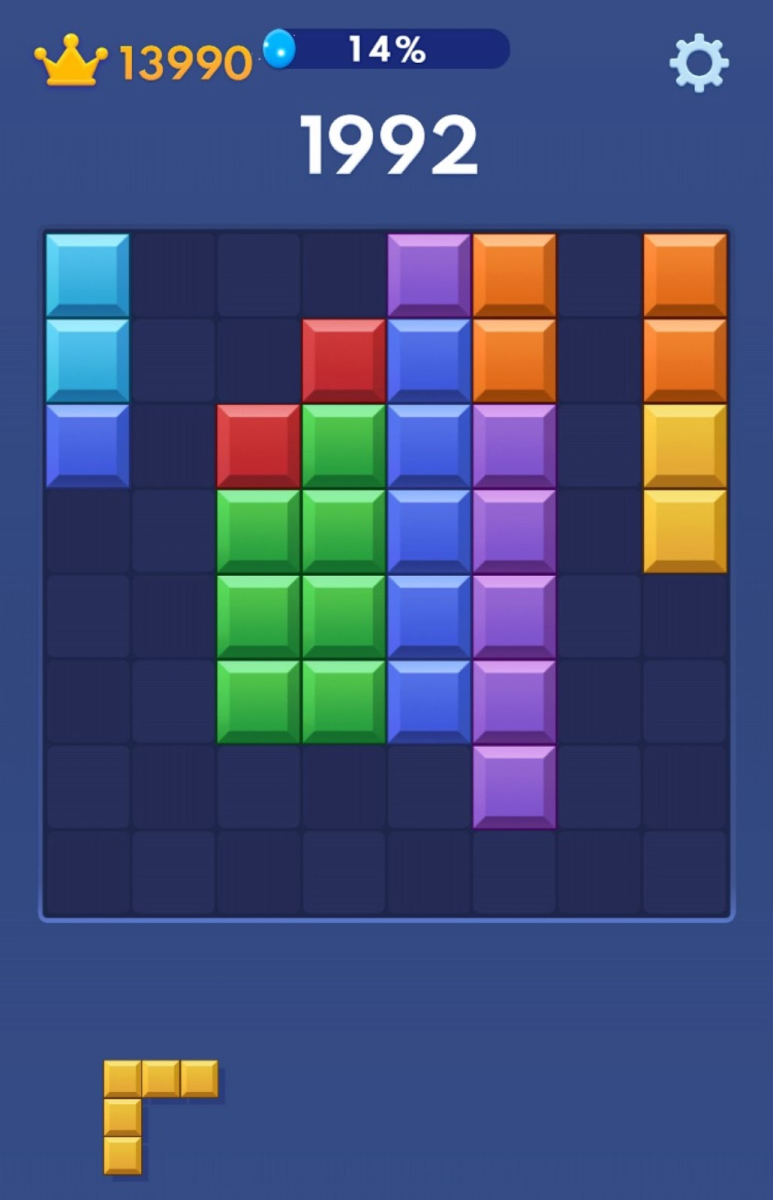If you walk past students at Lambert, chances are you’ll see colorful blocks sliding into place on their phones. “Block Blast!” has taken the mobile gaming world by storm, and Lambert students have been swept up in its wave. This “Tetris” inspired puzzle game presents a unique challenge that demands strategic thinking and quick decision-making. The never-ending flow of blocks, combined with the absence of traditional mobile game barriers like energy limits, creates a highly addictive experience that can easily consume hours of a player’s day.
“Block Blast!” taps into the brain’s reward system. Each successful grid clear, accompanied by satisfying visuals and rewarding sound effects, triggers a release of dopamine, encouraging players to strive for that next high score. This constant feedback loop, combined with the unpredictable nature of the game, creates a sense of both challenge and relaxation. Furthermore, since each round typically lasts a few minutes, students can play the game during short breaks.
However, the addictive nature of games like “Block Blast!” comes with many potential downsides. Research from the National Institutes of Health finds that mobile games with similar mechanics can significantly increase screen time, leading to sleep disturbances, decreased productivity and even social isolation, particularly among teenagers.
“I like playing ‘Block Blast!’ but I feel like it wastes so much of my time,” junior Anandita Mitra said. “If I start playing it, I don’t really want to stop and it ends up with me playing when I need to sleep.”
“Block Blast!” isn’t the first game to captivate players with its addictive mechanics and engaging design. Its success builds on the blueprint established by earlier mobile games, which mastered the art of enthralling players through rewards and challenges.
“Candy Crush,”which took the world by storm in the early 2010s, used psychological strategies to hook players. It relied on intermittent rewards, striking the right balance between challenge and success to keep players engaged. This constant cycle of near-success and dopamine release made “Candy Crush” more than just a casual pastime. Many players would spend hours replaying levels or even spend money on in-game purchases to progress faster.
“My parents used to love ‘Candy Crush’ and I remember that I wanted to play too,” Mitra explained. “It feels a lot like what’s happening with ‘Block Blast!’now. It pulls you in and doesn’t let go.”
Although “Candy Crush” eventually lost its virality, it set the stage for modern games like “Block Blast!” that use similar mechanics to exploit the brain’s natural response to rewards and progress. The cycle of addiction has persisted, with developers continuously refining these techniques to keep players engaged longer and more frequently. This has made games like “Block Blast!” both a source of entertainment and a potential challenge for maintaining balance in daily life.
As Lambert students continue to embrace “Block Blast!” as a popular pastime, it raises important questions about balancing gaming and productivity. While the game offers a stimulating and fun way to unwind, students must remain mindful of its impact on their time, focus and overall well-being. Finding that balance that can ensure they enjoy the benefits of gaming without falling into its more addictive pitfalls.















